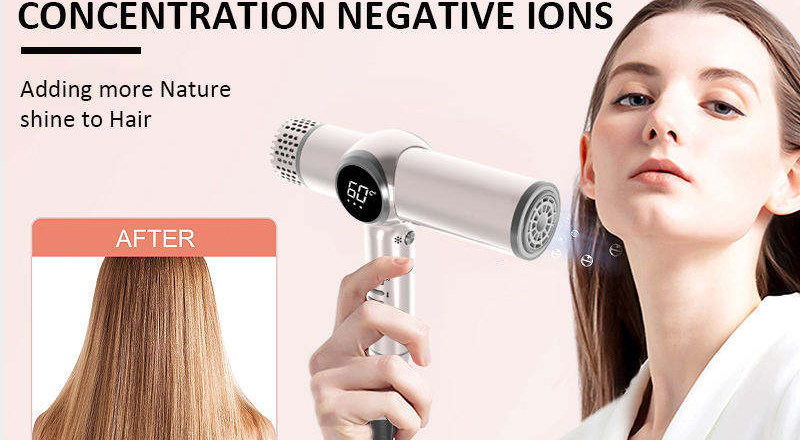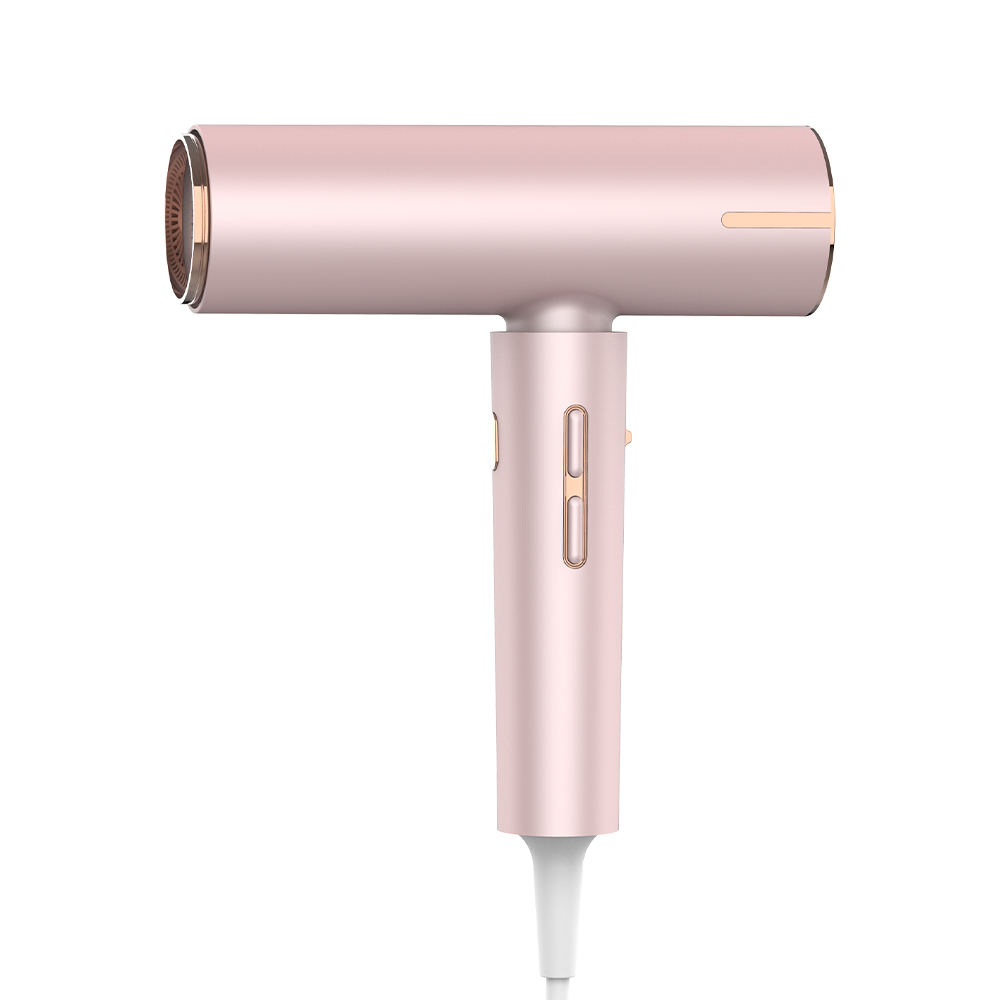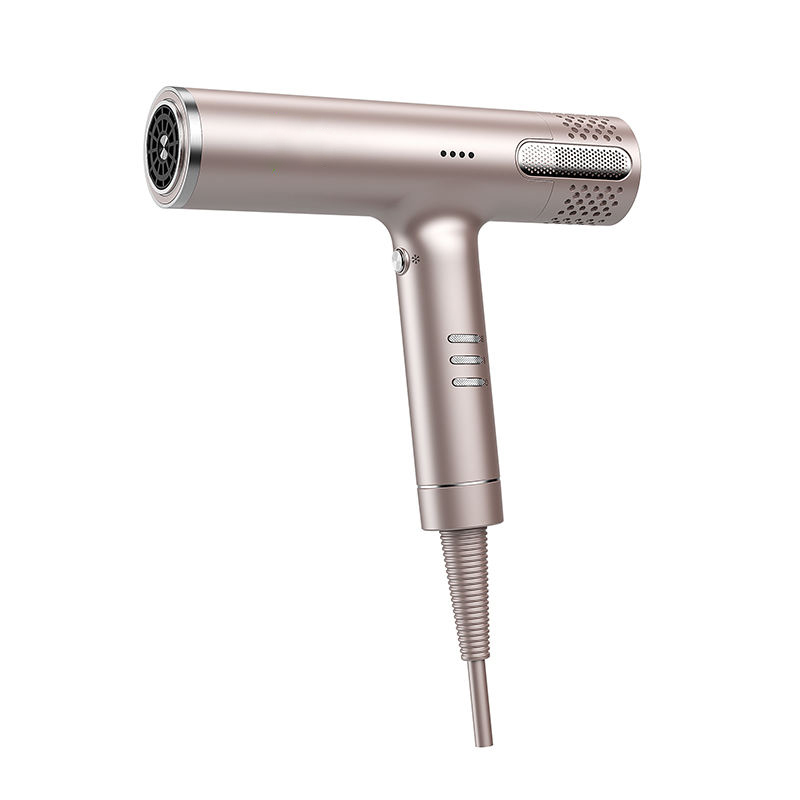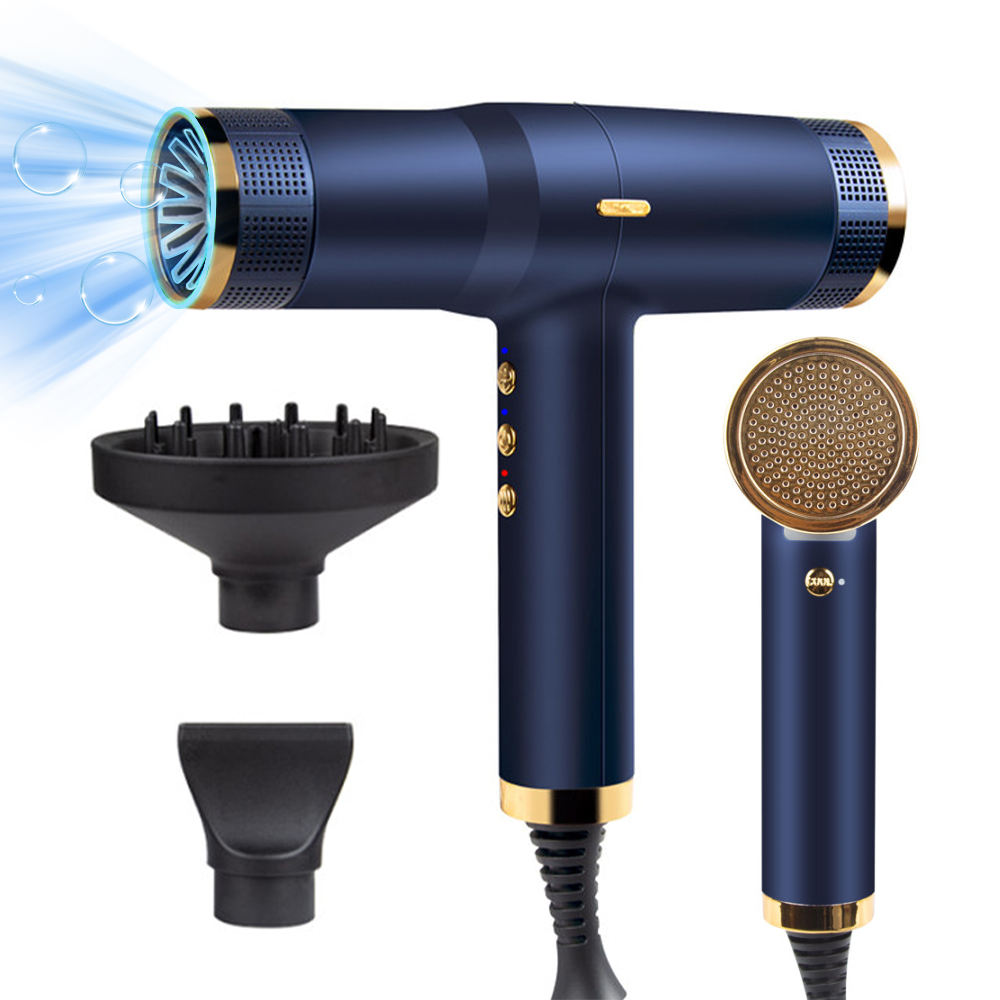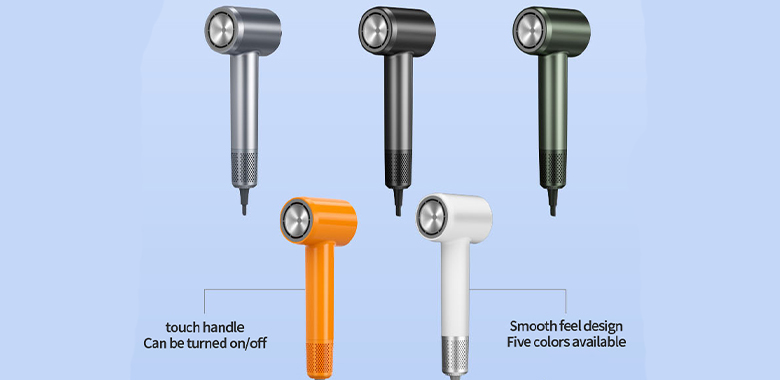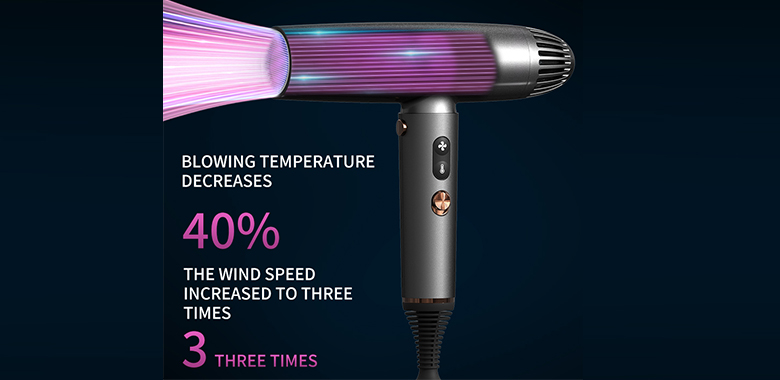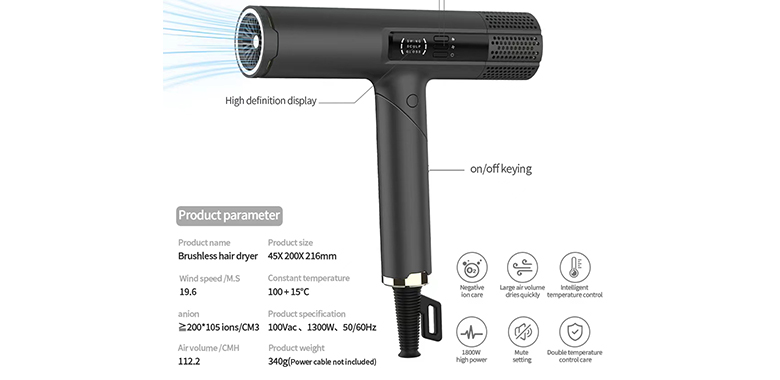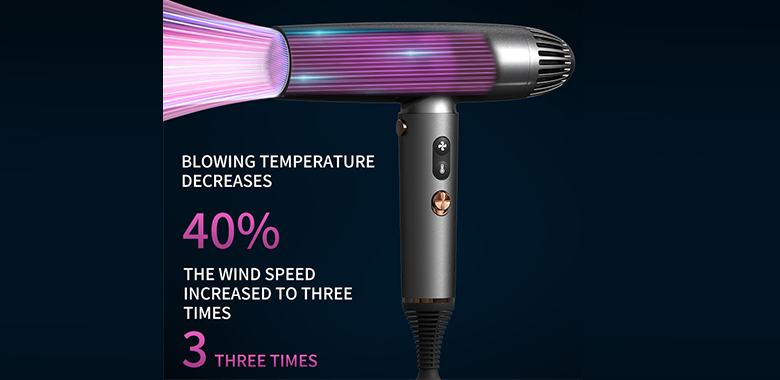Does a Salon Hair Dryer Damage Your Hair?
When it comes to using a salon hair dryer, one of the most common concerns is whether it damages your hair. To answer this question, it’s important to first understand the structure of your hair and how heat interacts with it.
Hair is made up of three main layers:
- Cuticle: The outermost layer, which protects your hair.
- Cortex: The middle layer, responsible for strength and elasticity.
- Medulla: The innermost layer, often found in thicker hair.
Excessive or improper use of heat tools like a salon hair dryer can disrupt the protective cuticle layer, leading to moisture loss, dryness, split ends, and even breakage. The key factor is the heat level and how often you expose your hair to it.
| Potential Issues | Effect on Hair |
|---|---|
| High heat exposure | Damages the cuticle, causing dry and brittle hair |
| Frequent use without protection | Increases breakage and split ends |
| Blow-drying wet hair | Weakens the hair structure, leading to damage |
While the salon hair dryer itself is not inherently bad, how you use it can determine whether your hair stays healthy or becomes damaged.
How to Reduce Hair Damage When Using a Salon Hair Dryer
Using a salon hair dryer doesn’t have to lead to damage if you follow the right techniques. Here are some practical ways to minimize harm and keep your hair healthy and vibrant:
- Use the Low-Heat Setting
Always opt for the lowest heat setting that can still dry your hair effectively. A cooler setting takes longer but is gentler on your hair. - Maintain Proper Distance
Keep the salon hair dryer at least 6 inches (15 cm) away from your scalp to avoid concentrated heat. Holding the dryer too close can lead to burns, dryness, and frizz. Use a nozzle attachment to direct the airflow and avoid overheating any single area. - Apply Heat Protectant Spray
Before blow-drying, apply a heat protectant spray to create a barrier between your hair and the heat. Look for products that contain silicone or proteins to coat and fortify the hair. - Avoid Blow-Drying Very Wet Hair
Blow-drying dripping-wet hair can cause more damage as the hair is in its most fragile state when wet. Towel-dry or air-dry your hair until it’s about 60-70% dry before using a salon hair dryer.
| Tips for Reducing Damage | Benefit |
|---|---|
| Use low heat | Minimizes risk of drying out and breaking hair |
| Keep dryer at a safe distance | Reduces concentrated heat damage |
| Apply heat protectant | Shields hair from heat exposure |
| Pre-dry hair before blow-drying | Shortens drying time, reduces overall heat damage |
How Often Should You Use a Salon Hair Dryer?
Determining the right frequency for using a salon hair dryer depends on your hair type, thickness, and personal styling needs. While it’s tempting to blow-dry your hair frequently for a polished look, overuse can lead to cumulative heat damage. Here’s how you can decide the right blow-drying schedule based on your individual hair characteristics:
- Hair Type
- Fine or Thin Hair: More susceptible to damage due to its delicate structure. It’s recommended to limit blow-drying to 1-2 times per week.
- Thick or Coarse Hair: Can handle more frequent blow-drying, but it’s still best to keep it to 2-3 times per week to prevent dryness.
- Hair Condition
- If your hair is already damaged or prone to breakage, reduce blow-drying frequency to allow for repair and use restorative treatments in between.
- Healthy hair can generally withstand more frequent use, but always incorporate protective measures like heat sprays and low-heat settings.
- Daily Lifestyle and Needs
Consider your daily routine and styling preferences. If you need styled hair every day, alternating between air-drying and blow-drying can help minimize damage while still maintaining your desired look. Using a salon hair dryer daily may lead to cumulative stress on your hair, so aim for a balanced approach.Hair Type Recommended Frequency Fine or thin hair 1-2 times per week Thick or coarse hair 2-3 times per week Damaged or fragile hair Once a week or less By tailoring your salon hair dryer use to your hair type and condition, you can keep your locks healthy while still enjoying the benefits of regular blow-drying. Always balance your hair’s needs with your styling routine to avoid unnecessary damage.
Which Type of Salon Hair Dryer Is Best for Your Hair?
With so many different types of salon hair dryers on the market, choosing the right one can significantly reduce hair damage. Here’s a breakdown of the most popular options and how they benefit different hair types:
- Ceramic Hair Dryers
- Features: Ceramic dryers use ceramic heating elements that distribute heat evenly, preventing hot spots that can cause damage.
- Best for: Fine, fragile, or dry hair.
- Ionic Hair Dryers
- Features: Ionic dryers emit negative ions, which break down water molecules on the hair faster, resulting in shorter drying times.
- Best for: Thick, frizzy, or curly hair.
- Titanium Hair Dryers
- Features: Titanium dryers provide fast heat transfer, making them highly efficient. However, they can get very hot, which may not be ideal for all hair types.
- Best for: Thick or coarse hair. The quick heat helps reduce drying time, but the high temperature may be too intense for fine or delicate hair.
- Tourmaline Hair Dryers
- Features: Tourmaline dryers combine ionic and infrared technology, producing even more negative ions than traditional ionic dryers. This makes the drying process faster while retaining moisture in the hair.
- Best for: Damaged, dry, or frizzy hair.
| Type of Dryer | Features | Best for Hair Type |
|---|---|---|
| Ceramic | Even heat distribution, gentle on hair | Fine, fragile, or dry hair |
| Ionic | Reduces drying time, seals cuticle | Thick, frizzy, or curly hair |
| Titanium | High heat, quick drying | Thick or coarse hair |
| Tourmaline | Combines ionic and infrared technology | Damaged, dry, or frizzy hair |
Choose a dryer that aligns with your hair type and needs to avoid unnecessary heat damage and keep your locks looking their best.
Healthy Blow-Drying Habits and Hair Care Tips
To keep your hair looking its best while using a salon hair dryer, it’s important to develop healthy blow-drying habits and incorporate regular hair care practices. Here are some key tips to maintain your hair’s strength and shine:
- Choose the Right Hair Products
Using hair products suited for your hair type is essential. For example, lightweight serums or heat protectants work well for fine hair, while rich, moisturizing products can benefit thicker, curly hair. Always apply a heat protectant before blow-drying to shield your hair from the heat of a salon hair dryer. - Blow-Dry in Sections
Divide your hair into manageable sections before blow-drying. - Regular Trims
To keep split ends at bay, schedule regular hair trims. Trimming your hair every 6-8 weeks will help maintain healthy ends and prevent further damage, especially if you frequently use heat tools like a salon hair dryer. - Maintain Natural Oil Balance
Over-washing or blow-drying too often can strip your hair of its natural oils, which are essential for keeping it hydrated and healthy. Try to space out your wash days and allow your scalp’s natural oils to nourish your hair. When using a salon hair dryer, always ensure your hair is slightly air-dried or towel-dried to reduce the blow-drying time. - Cool Down Setting
Always finish your blow-drying routine with a cool setting to lock in moisture and reduce frizz.
| Healthy Habits | Benefits |
|---|---|
| Use appropriate products | Protects hair and keeps it moisturized |
| Blow-dry in sections | Ensures even drying, reduces damage |
| Regular trims | Prevents split ends and keeps hair healthy |
| Avoid over-washing | Maintains natural oil balance |
| Use cool setting at the end | Locks in moisture, reduces frizz |

